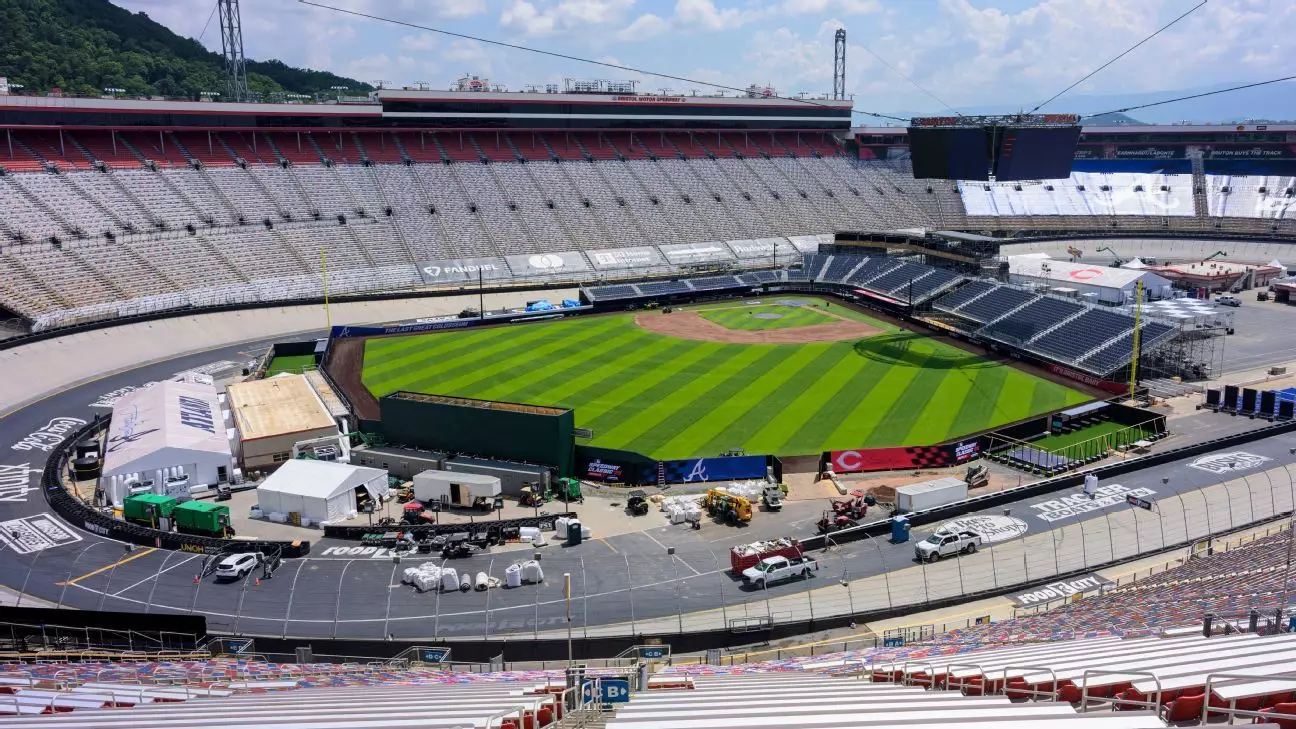Bristol Motor Speedway stands as an iconic symbol of American motorsport, a place where tradition and adrenaline converge. Recently, this historic venue experienced an unexpected metamorphosis when it hosted Major League Baseball’s first regular-season game in Tennessee. The event was a groundbreaking moment, bringing over 91,000 spectators and recontextualizing the track as a luminous sporting hub. However, the true test lay ahead: reverting the complex, multifaceted landscape from a baseball diamond back to its racing sanctuary within just days. Such rapid transformation exposes the remarkable ingenuity involved but also reveals the logistical and operational tightrope that organizers walk. This is not merely about building and tearing down structures—it’s a testament to the resilience of multi-use venues—a testament that opens the door for broader possibilities in sports and entertainment.
Engineering Marvels and Ingenious Resourcefulness
Converting the Bristol Speedway from baseball to racing is an exercise in engineering mastery and resourcefulness. For the baseball setup, every inch of the infield was meticulously crafted using over 17,500 tons of gravel and 340 tons of Pennsylvania clay, laying the foundation for a pristine playing surface. The process involved significant excavation, leveling, and the careful pouring of concrete walls, which then required curing—delays that could potentially jeopardize the turnaround schedule. Meanwhile, the infrastructure had to include elaborate facilities such as clubhouses, training rooms, and broadcast booths—elements that are physically removed and reconstructed as part of the disassembly process.
What stands out here is the paradox of temporary permanence—structures built to be dismantled with precision, efficiency, and minimal waste. The reclaimed materials, including gravel and wood from the grandstands, are being thoughtfully redirected to community aid and rebuilding efforts affected by natural disasters. This speaks to a larger philosophy of sustainability and community integration, transforming what was once purely commercial infrastructure into a tool for social good.
The Operational Juggle and the Significance of Flexibility
Executing this swift campus turnaround underscores an unwavering commitment to operational flexibility. The core challenge lies in balancing the detailed, often delicate, disassembly of baseball-specific facilities with the equally urgent need to prepare the track for NASCAR, one of the speedway’s primary events. The timeline is tight—targeting a completion date of September 7, giving just days until the NASCAR playoff race.
This kind of adaptive infrastructure is a bold statement against the rigidity of traditional venue management. It embodies a mindset that refuses to be pigeonholed, highlighting that sports venues can—and should—serve multiple purposes. The foresight to plan for contingencies like drying paint or minor construction delays demonstrates an understanding that flexibility isn’t a luxury but a necessity. Such an approach sets a new standard in multi-use sports complex management that other venues are likely to emulate.
Implications for Future Multi-Sport Environments
What this transformation reveals is perhaps the most vital insight: the future of large-scale venues must be rooted in adaptability. Bristol’s ability to host a record-breaking baseball game, then swiftly revert to its racing roots, suggests a blueprint for the evolution of sports infrastructure. The venue’s management has demonstrated that innovation and versatility can foster new opportunities, attract diverse audiences, and even bolster a community’s resilience through resource sharing.
The hinted interest from the NHL—examining how Bristol Managed its baseball challenges—serves as a pointer towards an exciting horizon: cross-sport collaborations and multifunctional arenas that transcend conventional boundaries. Such versatility not only maximizes asset utilization but also injects vitality into venues, ensuring they remain relevant amid shifting sporting landscapes. This adaptive spirit could redefine how we conceive of sports venues—turning them into dynamic cultural hubs capable of hosting a spectrum of events while simultaneously serving their communities beyond game days.
In essence, Bristol’s recent experience isn’t solely about a race track or a baseball field; it’s an emblem of innovative resilience. It challenges the industry to rethink static notions of sports infrastructure, embracing instead a future where versatility and community-minded efficiency are at the forefront. Such bold experimentation offers a compelling vision of what’s possible when legacy and innovation collide—each transformation a testament to human ingenuity and collective progress.


Leave a Reply